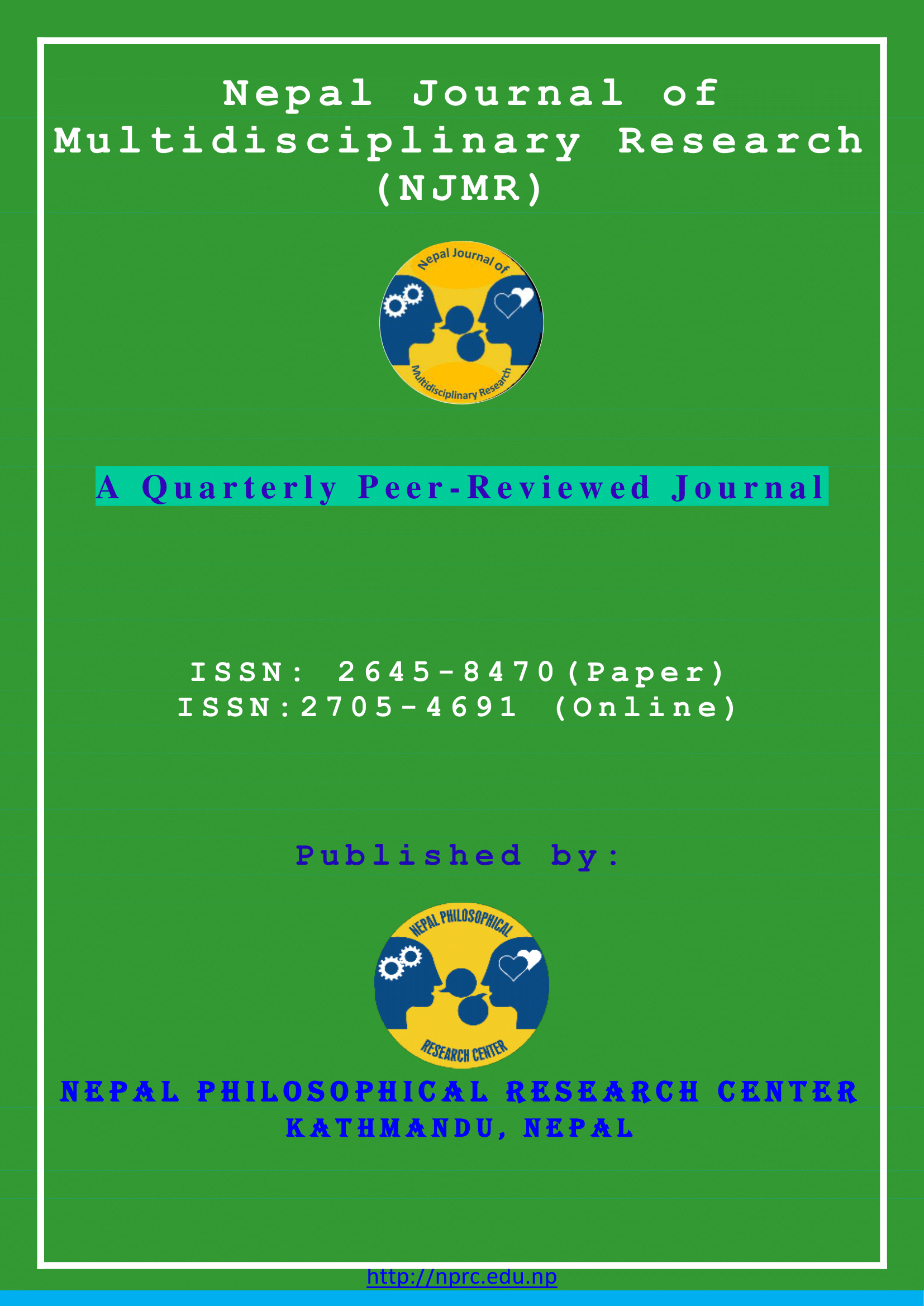Impact of Remittance on Food and Non-Food Poverty in Nepal
DOI:
https://doi.org/10.3126/njmr.v5i3.48016Keywords:
Remittances, Food poverty, Non-food poverty, Nepal, NLSS IIAbstract
Remittances inflow plays pivotal role to generate income for developing countries like Nepal. As such, an increase of remittance flow can have a significant impact on poverty reduction in Nepal. This study used data of Nepal Living Standard Survey (NLSS) II to examine the implication of remittances on food and nonfood poverty in Nepalese context. The research design of the study is both qualitative and quantitative by using cross sectional secondary data of Nepal Living Standard Survey (NLSS) II. The study employed three variants of the Foster-GreerThorbecke poverty index. By using the STATA software, the study has used the Probit Model as remittance and poverty effect function to observe probability of being non poor. This study finds out that remittance plays an important role in reducing food and nonfood poverty in all analytical domains. The study found that nonfood poverty has been experienced more than food poverty in national level. The pattern is similar in rural, urban and geographical area. Rural area Nepal has experienced high food and nonfood poverty in comparison to urban area. Similarly, both types of poverty level is high in mountain, than in hill whereas comparatively low in Terai.
Downloads
Downloads
Published
How to Cite
Issue
Section
License
Copyright (c) 2022 Sagar Tiwari

This work is licensed under a Creative Commons Attribution-NonCommercial 4.0 International License.
This license enables reusers to distribute, remix, adapt, and build upon the material in any medium or format for noncommercial purposes only, and only so long as attribution is given to the creator.




